Indian Gooseberry, commonly known as Amla, is a powerhouse of nutrients and has been cherished in traditional Indian medicine for centuries. Choosing the fertilizer to ensure your amla tree thrives and yields a bountiful harvest. This blog delves into amla cultivation, exploring the best fertilizer options.
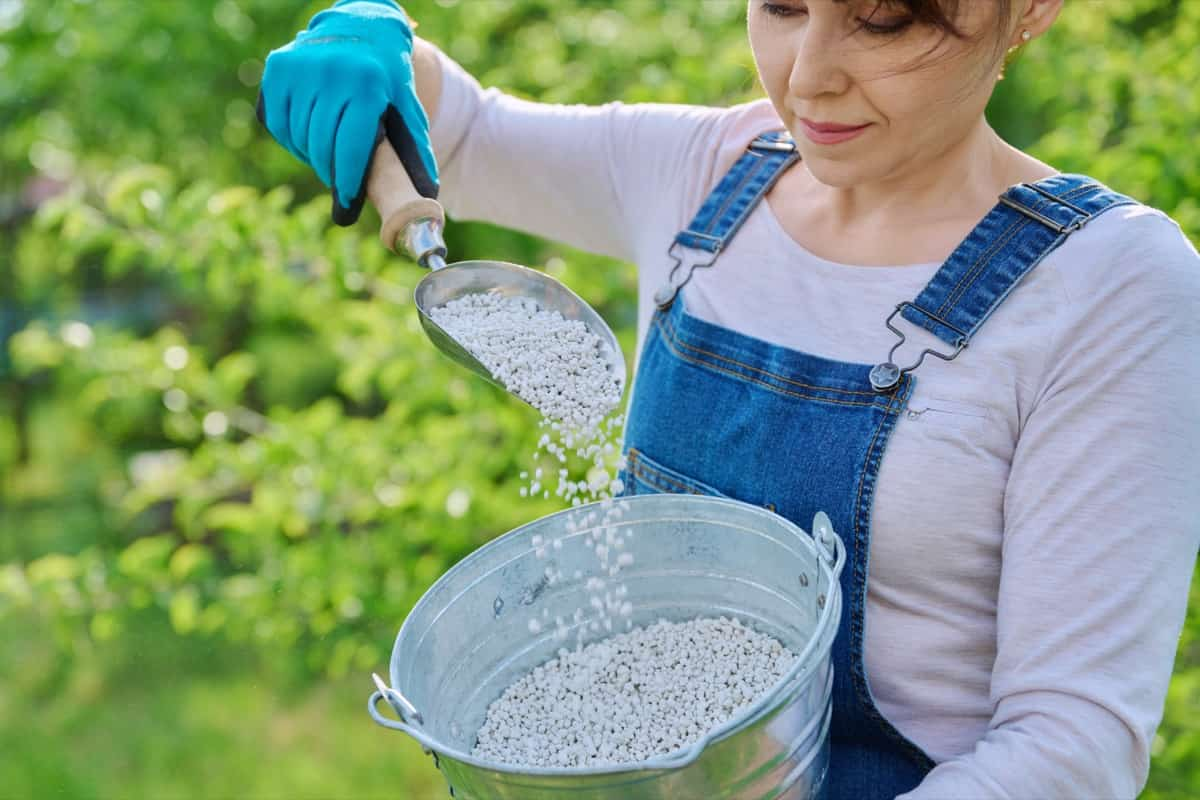
We’ll cover organic and natural choices, including homemade solutions, and demystify the NPK ratio. Plus, we’ll guide you on when and how to apply these fertilizers for optimal amla growth. Get ready to unlock the secrets of nurturing your Indian Gooseberry tree to perfection.
Best Fertilizer for Indian Gooseberry/Amla
Growing Indian Gooseberry (Amla) from Seeds and Caring for Amla Trees
- Seed Selection: Begin by extracting the seeds from the amla fruit. Look for reddish-brown, pointed seeds, discarding any discolored ones.
- Preparation: Soak the selected seeds in water overnight. Discard any floating seeds as they are not viable.
- Planting: Plant the seeds about half a centimeter deep in free-draining soil. Keep the soil consistently wet but not waterlogged.
- Pot Selection: Choose a wide and deep pot, ensuring the plant won’t become root-bound. Start small and upgrade as needed.
- Soil: Employ free-draining, fertile soil in the pot to support healthy root growth.
Amla Seed Germination Time: The time it takes for Amla seeds to grow and germinate can vary depending on the conditions. If you follow the right steps, Amla seeds will germinate within 2-4 weeks.
Amla Fruit Varieties and Taste: Gooseberries come in various varieties, each with its unique taste profile. Desert varieties, particularly, are renowned for their sweet and flavorful taste. These can be enjoyed with cream and sugar or used fresh in a wide range of sweet recipes, including gateaux.
Amla Fruit Bearing Time: When grown from seedlings, Amla trees typically start bearing fruit between 5 to 7 years after planting. On the other hand, budded clones may begin fruiting as early as the 5th year. Initially, Amla fruits are green, but as they mature, they pale greenish-yellow.
In case you missed it: Top 15 Steps to Boost Indian Gooseberry/Amla Yield: How to Increase Fruit Size, Quality, and Production
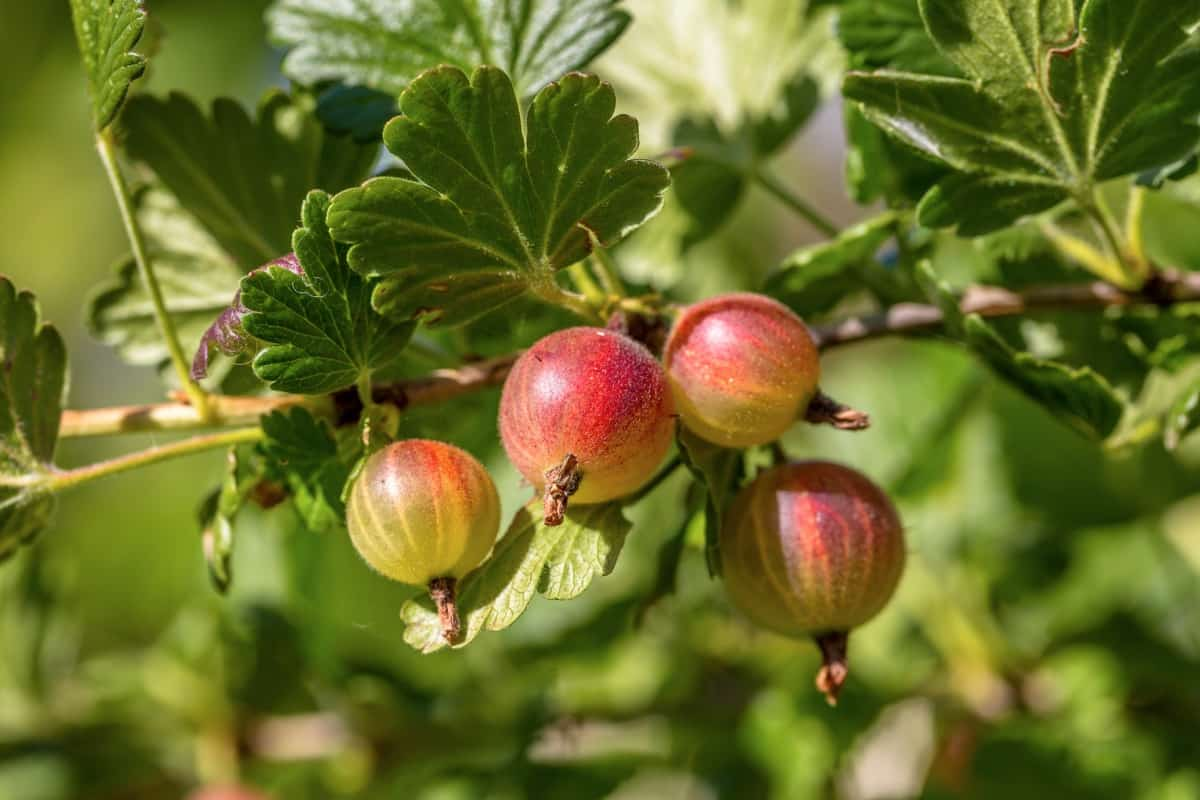
Harvesting Amla Fruits: Amla fruits are best harvested during February when they transition from light green to pale green and yellow. Mature fruits do not fall easily and may require vigorous shaking to be collected.
Reasons for Amla Tree Not Fruiting: There could be several reasons your Amla tree isn’t bearing fruit. Traditional wild-variety Amla trees can bear fruit when planted alone, but if you’ve planted a grafted tree, it may require other nearby varieties or Amla trees for cross-pollination.
Young Amla trees may wait for fruit. It often takes up to three years or more for them to bear fruit. Adequate time for the tree to establish itself is crucial. Improper pruning can also hinder fruit production. Prune your Amla tree correctly to ensure a healthy yield.
Growing Amla in Pots: Amla can be grown in pots, but certain considerations exist. Select a container at least 10 inches deep and wide to accommodate the plant’s growth. However, it’s essential to remember that Amla may outgrow the pot, so plan to transplant it outdoors eventually.
Best Management and soil Fertility and Fertilizer Application
Ideal Soil for Amla: Amla thrives in slightly acidic to saline soil and tolerates calcareous soil. The best results are achieved in well-drained, loamy soil enriched with organic matter. While Amla trees prefer loamy soil, they can adapt to heavy clay if adequate drainage is ensured during the initial years.
- Sunlight: Provide bright shade for your amla plant in its first year, gradually transitioning to direct sunlight from the second year onward.
- Watering: Keep the plant well-watered when young, especially during hot summers. Avoid excess or allowing the plant to sit in water in the saucer.
- Position: Choose a sunny location for your amla tree. While it can withstand heat and dry spells, it protects young trees from frost.
- Soil: Opt for well-drained, slightly acidic soil enriched with organic matter.
- Watering: Young plants require regular watering. Mature trees can be watered sparingly, with more frequent watering during active growth or drought conditions.
- Pruning: Prune young trees to encourage bushiness, removing damaged or crossing branches. Hard pruning in early spring rejuvenates the tree.
- Fertilization: Apply compost or aged manure before spring and use a fruit and citrus fertilizer containing nitrogen during the growing season.
In case you missed it: High-Density Gooseberry Plantation: Spacing, Plants Per Acre, Techniques, Cost, and Yield
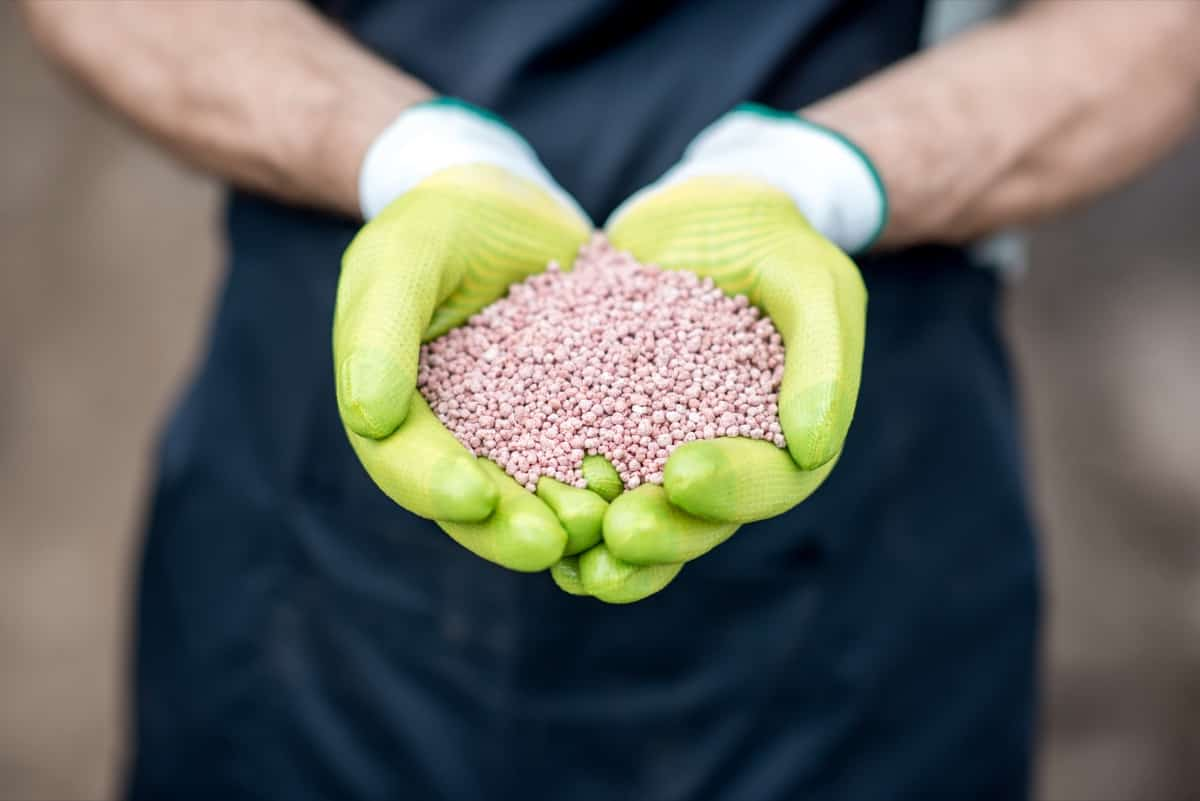
Fertilizing Gooseberries: For healthy Gooseberry plants, use nitrogen-rich fertilizers like well-rotted manure. Apply this in late autumn to provide a steady release of nutrients. Additionally, wood ash can be spread around the bushes to supply valuable potassium, promoting flowering and fruiting. Gooseberries are not too particular about soil type but appreciate well-drained soil enriched with compost or manure. Full sun is ideal, but they can tolerate partial shade.
- Mulching: Add a layer of organic mulch to retain soil moisture and deter weeds.
- Pests and Diseases: While Amla is generally hardy, occasional neem oil sprays can deter pests like caterpillars and mealybugs.
- Harvesting: Amla fruit can take 3 to 4 years to mature. Harvest mature, hard, glossy fruits using a ladder or a hook-tipped bamboo.
Nutrient Needs of Indian Gooseberry (Amla)
Indian Gooseberry, or Amla, has specific nutrient requirements for healthy growth and fruit production. As a tree that yields nutrient-rich fruits, it requires appropriate fertilization for optimal results. When cultivating Amla, natural fertilizers are recommended. Aged manure is an excellent choice, providing essential nutrients to the tree. This organic approach supports soil health and nutrient retention.
In suboptimal fruit production or overall tree health, supplementing with a balanced liquid fertilizer every 3-5 weeks can be beneficial. This helps address potential nutrient deficiencies and ensures the tree’s vitality. Pruning is a vital aspect of Amla tree care. Regular pruning involves removing dead, damaged, or diseased branches. Additionally, pruning helps address branches becoming entangled or crossing each other.
These pruning practices improve air circulation within the canopy and facilitate better sunlight penetration. Adequate sunlight exposure is crucial for robust fruit development and overall tree health. Amla trees may face challenges from pests and diseases. Rust is a major disease that can affect Amla trees.
In case you missed it: How to Control Pests and Diseases in Strawberry Crop: Causes, Symptoms, Chemical, and Biological Management
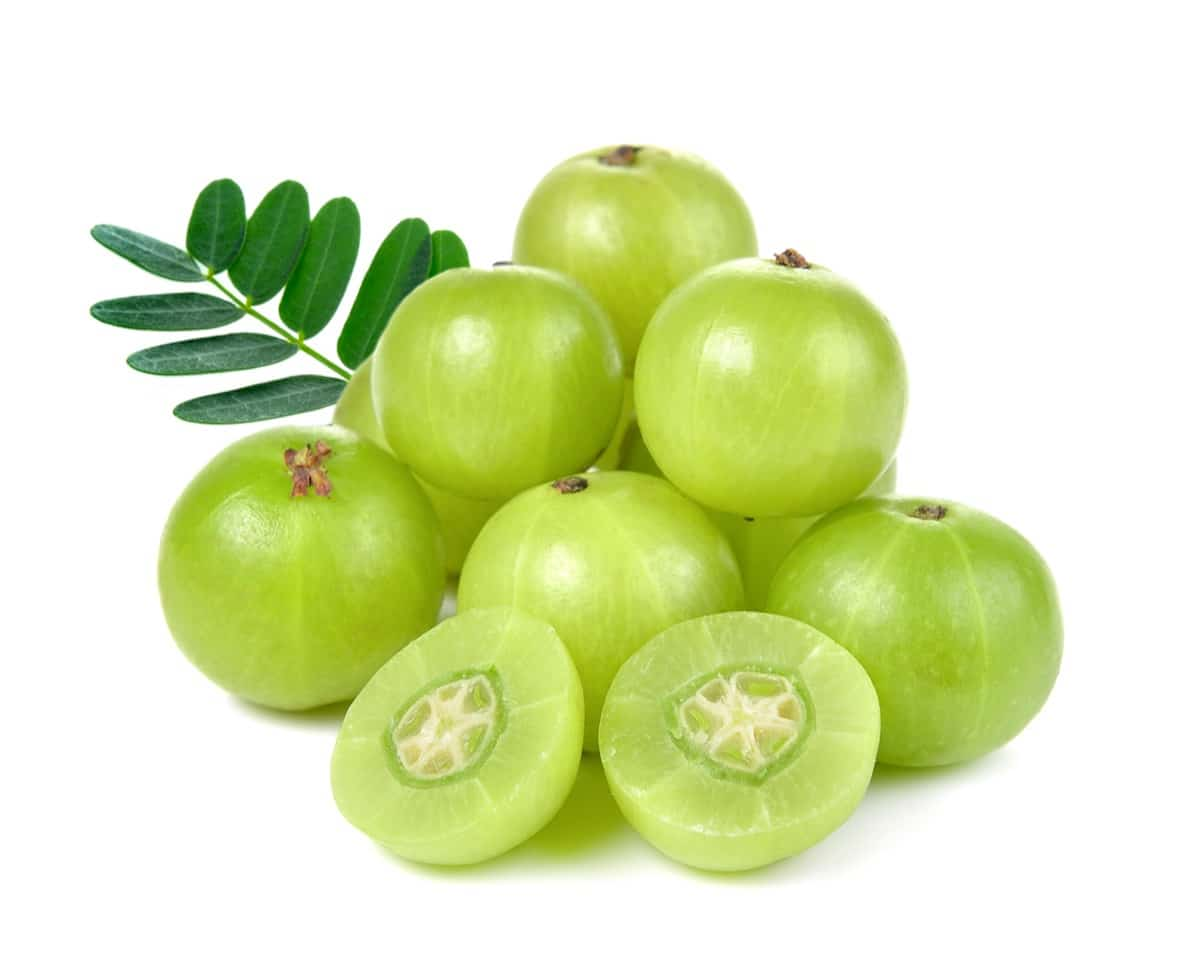
To combat this, it’s essential to employ preventive measures and, if necessary, appropriate treatments. Regular inspection of the tree’s foliage can help identify early signs of pest infestations, such as caterpillars, mealybugs, and general garden pests. Addressing these issues promptly can prevent damage to the tree and ensure a healthy, productive Amla tree.
Organic Fertilizers: A Natural Boost for Amla Trees
Nutrient-rich soil Enrichment: Organic fertilizers, such as aged manure, compost, and vermicompost, are packed with essential nutrients like nitrogen, phosphorus, potassium, and micronutrients. When applied to the soil around Amla trees, these organic amendments enhance soil fertility and nutrient availability. They create a nutrient-rich environment that encourages healthy root development and tree vigor.
Compost, aged manure, vermicompost, fish emulsion, and seaweed extract are essential for Amla tree health. Compost enhances soil fertility, supports root development, and encourages beneficial microorganisms. Aging manure provides a balanced nutrient profile, vermicompost improves soil aeration, fish emulsion boosts nitrogen levels, and seaweed extract enhances nutrient absorption and plant immunity.
Slow and Steady Nutrient Release: Unlike synthetic fertilizers that can lead to rapid nutrient release and potential over-fertilization, organic fertilizers release nutrients gradually. This ensures a consistent and sustained supply of essential elements to the Amla tree over an extended period. This slow-release nature minimizes the risk of nutrient leaching and helps maintain soil health.
Improved Soil Structure: Organic fertilizers improve soil structure by enhancing water-holding capacity and aeration. This benefits Amla trees, particularly in areas with variable moisture levels, as it helps prevent waterlogging and root rot.
Microbial Activity Enhancement: Organic fertilizers foster beneficial microbial activity in the soil. Healthy soil ecosystems promote nutrient cycling and nutrient uptake by Amla trees. These microbes assist in breaking down organic matter into plant-available forms, further enhancing the tree’s nutrient absorption.
Environmentally Friendly: Organic fertilizers have a minimal environmental footprint. They contain harmful chemicals or synthetic additives that can cause groundwater or harm beneficial soil organisms. This makes them a sustainable choice for long-term Amla cultivation.
Homemade Fertilizers: Cost-Effective Solutions for Amla Cultivation
Banana Fertilizer: Banana peels are rich in potassium, an essential nutrient for fruiting plants like Amla. Chop banana peels and bury them around the base of the tree. As they decompose, they release potassium gradually, promoting healthy fruit development.
In case you missed it: Bangalore Method of Composting: Preparation Method, Benefits, and Disadvantages
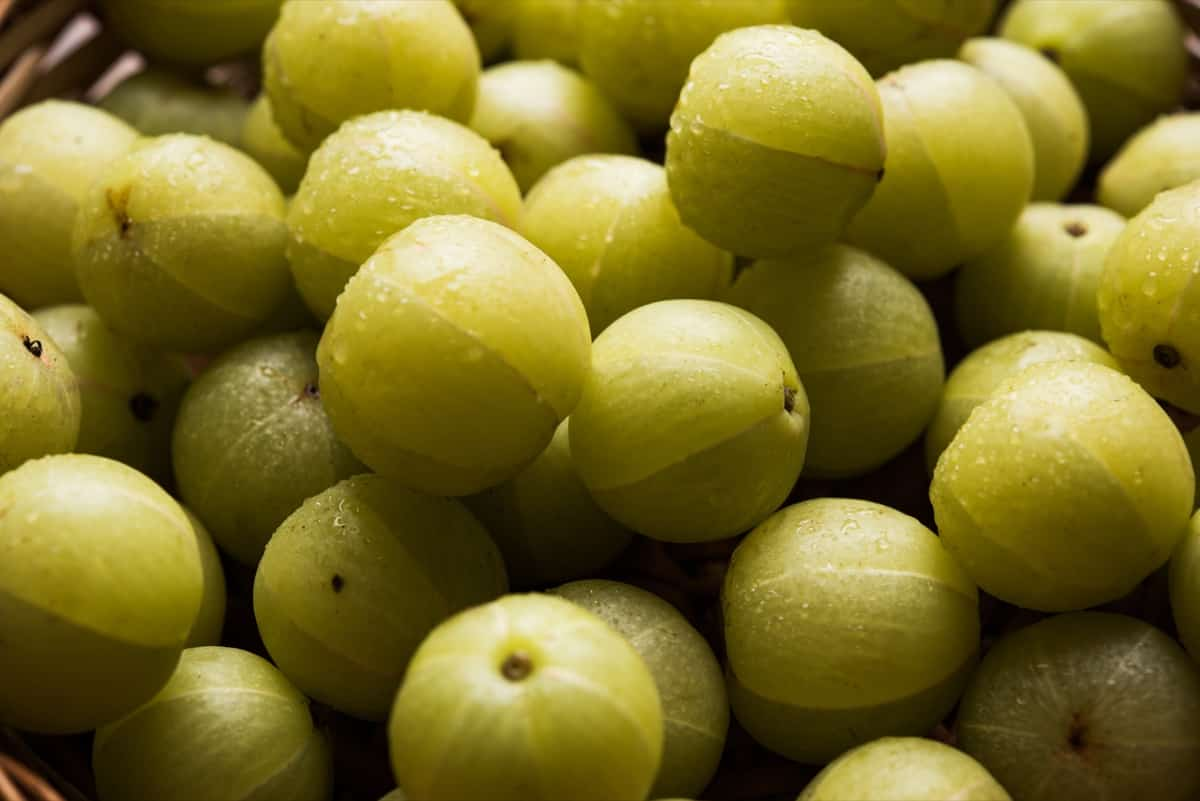
Epsom Salt Solution: Epsom salt, or magnesium sulfate, can be soluted in water and applied to the soil. It boosts magnesium levels in the soil, improving photosynthesis and overall tree vitality.
Eggshell Powder: Crushed eggshells are a great source of calcium, which is crucial for strong cell walls and fruit quality. Grind eggshells into a fine powder and sprinkle it around the tree to enrich the soil.
Comfrey Tea: Comfrey leaves can create a nutrient-rich liquid fertilizer. Soak comfrey leaves in water for a few weeks, strain the liquid, and dilute it with water before applying it to the soil. Comfrey tea provides a balanced blend of nutrients.
Coffee Grounds: Used as excellent source of nitrogen, which supports vegetative growth in Amla trees. Mix coffee grounds in soil or sprinkle them around the tree to provide a steady release of nitrogen.
NPK Ratio for Amla: What You Need to Know
The NPK ratio, representing the proportion of essential nutrients in fertilizers, is crucial for Amla (Indian Gooseberry) cultivation. For Amla trees, an ideal NPK ratio is roughly 10-12-10 or 14-28-14, signifying a balanced mix of nitrogen, phosphorus, and potassium.
- Nitrogen (N): Essential for leafy growth and overall tree vigor, nitrogen supports the development of healthy Amla leaves and branches.
- Phosphorus (P): Crucial for root development and flower and fruit production, phosphorus plays a key role in the Amla tree’s reproductive growth.
- Potassium (K): Vital for fruit quality, potassium enhances Amla fruit’s taste and nutritional content while improving resistance to diseases and stress.
Timing is Everything: When to Apply Fertilizer to Amla Trees
When to Apply
- Early Spring: Apply fertilizer with an NPK ratio of 10-10-10 or 14-14-14 in early spring, just before the growing season starts. This provides essential nutrients as the tree awakens from dormancy and initiates active growth.
- Late Winter: In regions with mild winters, a second application can be made in late winter to provide an additional nutrient boost before spring growth.
- Stage: Apply fertilizer to the soil around the base of the Amla tree, ensuring it is well-distributed within the root zone.
- Quantity: The quantity of fertilizer depends on the tree’s age and size. For mature Amla trees, apply 0.5-2kgs of fertilizer per year of tree age, up to a maximum of 3-5kgs per tree per year. Younger trees require proportionally less.
- Reason: Fertilizer application during these periods supplies essential nutrients, particularly nitrogen, phosphorus, and potassium, to support robust vegetative growth, flowering, and fruit development, ultimately ensuring a healthy and productive Amla tree.
Signs of Nutrient Deficiency in Amla Plants
Amla plants, or Indian Gooseberry, can suffer from nutrient deficiencies. Major deficiencies include nitrogen, which results in pale green or yellow leaves, reduced growth, and sparse foliage. Phosphorus deficiency causes dark green leaves, delayed flowering, and poor fruit development.
In case you missed it: 15 Best Chaff Cutter Machines in India: For Dry, Green Fodder Cutting, and Price List Included
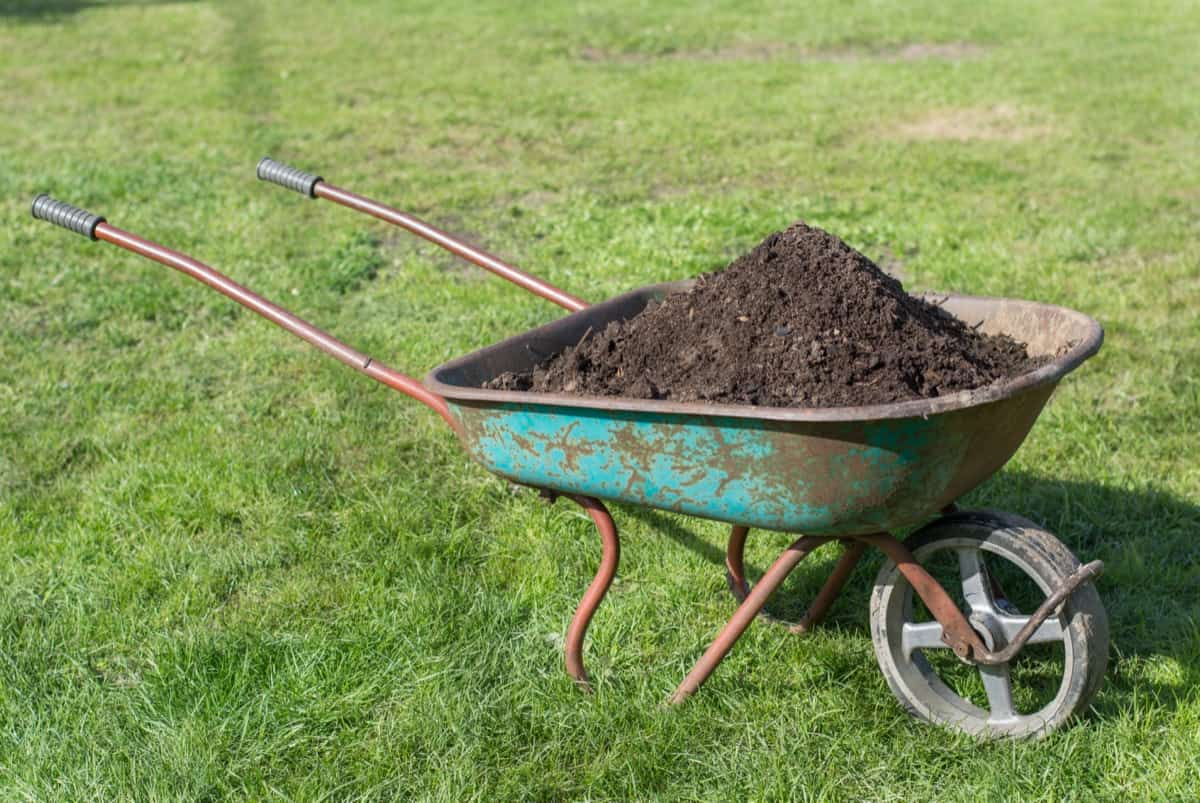
Insufficient potassium leads to yellowing leaf edges, reduced fruit size, and increased disease susceptibility. Minor deficiencies include iron, magnesium, and zinc, which cause interveinal chlorosis, yellowing leaves with green veins, and small, distorted leaves with interveinal chlorosis.
Specific Guidelines for Fertilizing Young Amla Trees
Fertilization should be started in the second year after planting, usually in early spring. Use a balanced fertilizer with an NPK ratio of 10-10-10 or 14-14-14. Apply 1/4 to 1/2 pounds per tree, gradually increasing each year. Distribute evenly within the tree’s drip line, keeping it away from the trunk. Water thoroughly after application and regularly inspect the tree for nutrient deficiencies to adjust fertilization for healthy growth.
Natural Pest Control Methods that Complement Amla Fertilization?
Growing Amla from seeds is a straightforward process. Extract the seeds from the Amla fruit, soak them overnight, and plant them about half a centimeter deep in well-draining soil. Germination typically occurs within 14 to 30 days, although some seeds may take up to 90 days to sprout. During the first summer, water the seedlings with one to two inches per week in a partially shaded area.
As for Gooseberry yields, a mature tree can produce 50 to 70 kg of fruit annually, each kilogram containing approximately 15 to 20 Gooseberries. A well-maintained tree remains productive for up to 70 years. Conversely, Amla plants can yield around 100 kg of fruit per tree annually, with a lifespan of about 25 years.
Complement Amla fertilization with natural pest control methods like neem oil sprays to deter pests like caterpillars and mealybugs. Encourage beneficial insects such as ladybugs and lacewings to prey on pests. Maintaining proper pruning and overall tree health can also enhance Amla’s resistance to pests, reducing the need for chemical interventions.
Conclusion
Indian Gooseberry (Amla) cultivation, opt for balanced organic or homemade fertilizers with proper timing and application techniques. NPK ratios should be considered, ensuring healthy growth and abundant fruit production.
- How to Build a Low-budget Goat Shed: Cheap Ideas and Tips
- Goat Farming Training Programs in India: A Beginner’s Guide
- Types of Pesticides Used in Agriculture: A Beginner’s Guide
- Economical Aquaculture: A Guide to Low-Budget Fish Farming
- 15 Common Planting Errors That Can Doom Your Fruit Trees
- How to Make Houseplants Bushy: Effective Tips and Ideas
- Innovative Strategies for Boosting Coconut Pollination and Yield
- Pollination Strategies for Maximum Pumpkin Yield
- The Complete Guide to Chicken Fattening: Strategies for Maximum Growth
- Natural Solutions for Tulip Problems: 100% Effective Remedies for Leaf and Bulb-Related Issues
- Revolutionizing Citrus Preservation: Towards a Healthier, Greener Future
- Natural Solutions for Peony Leaf and Flower Problems: 100% Effective Remedies
- Maximizing Profits with Avocado Contract Farming in India: A Comprehensive Guide
- Natural Solutions for Hydrangea Problems: 100% Effective Remedies for Leaf and Flowers
- The Ultimate Guide to Choosing the Perfect Foliage Friend: Bringing Life Indoors
- From Sunlight to Sustainability: 15 Ways to Use Solar Technology in Agriculture
- The Ultimate Guide to Dong Tao Chicken: Exploring from History to Raising
- The Eco-Friendly Makeover: How to Convert Your Unused Swimming Pool into a Fish Pond
- Mastering the Art of Delaware Chicken Farming: Essentials for Healthy Backyard Flocks
- 20 Best Homemade Fertilizers for Money Plant: DIY Recipes and Application Methods
- How to Craft a Comprehensive Free-Range Chicken Farming Business Plan
- Brighten Your Flock: Raising Easter Egger Chickens for Beauty and Bounty
- How to Optimize Your Poultry Egg Farm Business Plan with These Strategies
- Subsidy for Spirulina Cultivation: How Indian Government Schemes Encouraging Spirulina Farmers
- Ultimate Guide to Raising Dominique Chickens: Breeding, Feeding, Egg-Production, and Care
- Mastering the Art of Raising Jersey Giant Chickens: Care, Feeding, and More
- Ultimate Guide to Raising Legbar Chickens: Breeding, Farming Practices, Diet, Egg-Production
- How to Raise Welsummer Chickens: A Comprehensive Guide for Beginners
- How to Protect Indoor Plants in Winter: A Comprehensive Guide
- Ultimate Guide to Grow Bag Gardening: Tips, Tricks, and Planting Ideas for Urban Gardeners
- Guide to Lotus Cultivation: How to Propagate, Plant, Grow, Care, Cost, and Profit
- Agriculture Drone Subsidy Scheme: Government Kisan Subsidy, License, and How to Apply Online
- Ultimate Guide to Raising Araucana Chickens: Breed Profile, Farming Economics, Diet, and Care
- Bringing Hydroponics to Classroom: Importance, Benefits of Learning for School Students
- Ultimate Guide to Raising Polish Chickens: Breed Profile, Farming Economics, Diet, and Care
- Ultimate Guide to Raising Australorp Chickens: Profile, Farming Economics, Egg Production, Diet, and Care